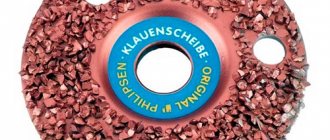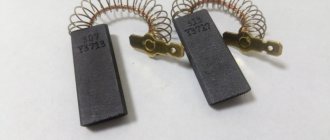Brick laying, wall finishing, plastering work, finishing masonry joints - all this cannot be done without a trowel. The well-known designation for a craftsman's tool in a professional environment is called a trowel. Externally, it is a metal plate polished on both sides with a curved handle. The shape of the handle can be different - it is selected according to the type of work. With a metal or wooden tip - for laying bricks and tiles, to tap each element, removable - for quickly replacing a worn part. The shape of the plate also differs - triangular, rectangular, with a smooth and embossed surface. When choosing one or another trowel, you need to understand what it is intended for and which one will most optimally cope with the task.
| Category | Name | price, rub. | brief information |
| The best trowel for Venetian plaster | Senideco (France) | 3000 | For most decorative coatings - Venetian plaster, silk-like, glaze finishes and waxes. |
| Pavan (Italy) | 1500 | For applying thin-layer decorative plasters, especially in the Venetian style. Wooden handle, non-slip. | |
| Oikos (Italy) | 3250 | OIKOS INOX stainless steel plate. The most popular instrument in Venetian technique. The wooden handle and radius roundings around the perimeter allow you to work more accurately. | |
| The best trowel for decorative plaster | Armero A233/120 (Spain) | 770 | Mirror polished stainless steel blade 0.7 mm thick. Alloyed shank. Well suited for creating a flat surface due to rounded corners. |
| Harris (England) | 970 | Made of stainless steel for applying all types of decorative materials and Venetian plaster. | |
| CO-ME 310LEN (Italy) | 2350 | A well-polished and perfectly flat working surface is designed for applying and polishing decorative lime plaster and artificial marble. | |
| The best trowel for aerated concrete | Corte 1753C 200 mm | 580 | The bucket is steel, the handle is two-component rubberized. 5 main standard sizes. |
| Lugato | 770 | The base is galvanized steel and anti-corrosion paint. The handle is plastic. 5 sizes according to the width of aerated concrete. | |
| Promise | 530 | Steel, wooden handle. Width 100 mm. The length of the teeth is designed exactly for the desired thickness of the glue - 1-3 mm. | |
| The best trowel for liquid wallpaper | Pavan 817/PV TRASP | 390-440 | Transparent plastic spatula for liquid wallpaper and other decorative coatings. Plate thickness 1 mm, Sicodur, rounded edges, trapezoidal shape, PVC plastic handle. |
| 3M SRL | 1000 | The branded grater is designed for professional application of the material. |
Features of shape and materials
It would seem, what problems can there be when choosing a trowel, read – trowel? Various, ranging from calluses to poor-quality masonry that will have to be changed.
The first thing you need to pay attention to when purchasing is the material of the plate itself. In good models, it is hard steel 1.5-2 mm thick, which is convenient for capturing a portion of the solution and distributing it over the surface. If the metal bends, it will be inconvenient to mix and take the solution.
The handle is made mainly of wood or plastic. Both of them are quite light. Choose models with a rubber lining on the handle - it’s more convenient to work, the handle does not slip or slide out, and at the same time calluses do not appear.
Initially, pay attention to how the trowel lies in your hand and how much it weighs. It is important that the plate does not rust, otherwise such masonry will be of little use.
Conclusion
Now you have a general idea of how to properly putty ceilings and walls. All that remains is to decide whether you will entrust the finishing of your living space to specialists or decide to do this work yourself. Therefore, if you have any questions, ask them in the comments to the text, I will definitely answer everything and give useful advice.
Did you like the article? Subscribe to our Yandex.Zen channel
October 6, 2016
Plastering and puttying of walls
If you want to express gratitude, add a clarification or objection, or ask the author something, add a comment or say thank you!
Types of trowels
Depending on the type of work, trowels are divided into the following types
| Photo | Name | Description |
| Mason's trowel | The shape is triangular or trapezoidal. Used for preparing mortar and laying brick and stone. | |
| Finisher's trowel | For preparing and working with plaster and gypsum solutions. The shape is predominantly rectangular - this is convenient for measuring the amount of dry mixture. | |
| Concrete and stove trowel | Classic trowel for mixing concrete and cement mortars, incl. bark beetle Reinforced handle, steel plate 2 mm thick. | |
| Tiler's trowel | Triangular shape with beveled edges. Also used for mixing and laying tiles. The tip is reinforced for tapping. | |
| Plastering trowel | One of the most convenient for throwing mortar onto vertical surfaces. It is best to choose a size of 16x19 cm. | |
| Trowel | Used for uniform distribution and polishing of the mixture on the surface. The plate is absolutely smooth. Recommended sizes are 20x8, 24x10 and 28x14 cm. | |
| Toothed trowel | For applying adhesive mortar when laying tiles. It is also convenient for creating textured shading on the wall. The height of the teeth is from 4 to 10 mm. | |
| Trowel for jointing | The main tool for tilers and masons, allowing for even seams. The shape of the handle may be different, but the plate is always narrow. | |
| Trowel for filling seams | You need to buy it complete with a jointer. It is convenient to keep some supply of solution. Due to the sides, it is convenient to work with laying on a horizontal surface, and forming a seam through the window. | |
| Corner trowel | Required for forming corner sections of walls and forming even corners | |
| Trowel for foam and aerated concrete blocks | A very convenient tool when working with such building materials. The quantity is enough for exactly one block, lays down in an even layer, and due to the jagged surface adhesion increases |
So, we’ve sorted out the varieties, now we can begin to review individual models chosen by builders and home craftsmen as the most convenient, simple and inexpensive to work with different materials. The 2022 rating is based on the experience of builders.
How to use a trowel
The tool is easy to use, but requires skill.
When applying the mortar with a spatula, the movement is performed with a brush, since the tool has a flat shape.
The curved neck of the trowel saves effort as part of the movement is required.
But because of this, the throw itself is performed shorter and sharper.
A trowel is used for plastering and finishing work.
The procedure is very similar.
1. Plaster is applied in 2–3 layers.
The spray and the first layer are applied using a standard plasterer's trowel - with a sharp end.
When working, it is more convenient to collect material not from a container, but from a falcon - a steel sheet with a handle.
This way unnecessary bending is avoided.
2. Plaster is applied to the falcon, starting from the top side.
Having finished applying the portion, pick it up from the edges to the center, and return the excess solution to the container.
3. Use a trowel to scoop up a portion of the solution.
The volume depends on the severity and nature of the material.
4. When throwing, only the hand performs the movement, and not the whole arm.
Make a swing with the brush and stop abruptly.
In this case, the solution slides off the blade, reaches the wall and is fixed on it.
The heavier the solution, the sharper the stop.
The stroke itself is not too strong, otherwise the plaster will splatter.
When spraying, a liquid solution is used, so you can collect the material from a box, and make a very sharp stroke, since here the solution should be splashed.
1. The second layer is spread with a trowel or falcon.
When plastering a wall, the falcon is pressed to the surface, with a trowel, pick up a portion of the material, and spread it in a thin layer on the surface.
Excess solution falls on the falcon.
2. Using a trowel, smooth the plaster on the wall with a layer of the required thickness.
Grouting trowels are often used for this work.
If a thin layer is required - when using Venetian plaster, for example, then grout models are more effective.
The best trowel for Venetian plaster
A beautiful and very capricious material - this is how craftsmen speak about Venetian plaster. To work with it, you also need an appropriate tool, and in this case it is a trowel. It is advisable to buy several types at once, one of which is for the base layer (primer and putty), the second for the finishing layer, it should be wider. Work at the finish at the most acute angle so as not to damage the primer.
Senideco Taloche inox
Using this tool, most decorative coatings are applied: Venetian plasters, silk finishes, glaze finishes and waxes.
Senideco
The largest size 28x14 cm is convenient to use when working with the first primer-putty layer; the finishing layer is applied and leveled with the smallest spatula so that there are no mixture residues or stains on the surface at the edges. A spatula costs 2500-3000 rubles. Manufacturer France.
Pavan
The spatula is produced in Italy. The main purpose is to apply thin-layer decorative plasters, mainly using Venetian techniques. Allows you to create the classic Venetian effect of polished veined marble.
Pavan
It’s light in weight, the handle fits comfortably in the palm of your hand, and the wooden handle doesn’t slip or rub. Due to the size, it is convenient to change the angle of application. When choosing, pay attention to the straight line of the plate; sometimes it becomes bent during transportation, and then it will no longer be possible to work using the Venetian technique. Price 1500 rub.
Oikos
The spatula was made in Italy - it is a well-known “legislator” of Venetian technology and everything connected with it. To make it easier to apply a thin layer, the corners on the plate are rounded.
Oikos
Ideal for applying and sanding the third coat, which should be absolutely smooth and silky to the touch. Experts call this model the best in quality and price - 3,250 rubles.
The best trowel for decorative plaster
A spatula of this kind is needed to create a relief of any depth and pattern on the wall, smooth (mirror) surfaces and uniform application over the entire surface without spots or protruding edges.
Armero A233/120
Spanish product, available in two sizes - main and auxiliary. Well suited for applying the first layer; inexperienced craftsmen may have problems with the last one.
Armero A233/120
Apply the finishing coat at the sharpest possible angle so as not to remove the preliminary base. Steel handle with rubber lining. The price is low - 770 rubles.
Harris
The ironer itself is manufactured in China, the country of the brand is England, due to which it is possible to set low prices - 950-970 rubles. The stainless steel plate is 0.5 mm thick, hard enough, and can even be used for kneading.
Harris
The fastenings are aluminum, the handle is two-component rubberized plastic. Suitable for all types of work on walls and other surfaces.
CO-ME 310LEN
The Italian instrument is produced in 3 main sizes:
- 20x8 cm;
- 24x10 cm;
- 28x12 cm.
CO-ME 310LEN
All are made in the form of a trapezoid with rounded edges. The handle is made of two-component rubberized plastic, which is convenient for long-term work. Surface made of galvanized stainless steel 0.6 mm thick. Well polished, perfectly smooth. It is convenient to work with decorative lime plaster, artificial marble, all types of wax and silk coatings. The fastening of the plate and handle is welded.
The best trowel for aerated concrete
An indispensable construction tool that allows you to correctly and quickly apply the adhesive composition to the surface of the block, since ordinary cement mortar is not suitable. The device has a special, but rather simple design, reminiscent of a bucket, into which exactly as much as is needed to lubricate one block is collected. The edges of the bucket are shaped like teeth, which create grooves when applied, thereby increasing adhesion.
Corte 1753C 200 mm
The most popular tool among masons due to its price, bucket shape and two-component rubberized handle. Even with prolonged work, calluses do not rub, and the hand does not get tired.
Corte 1753C 200 mm
The base is metal, coated with anti-corrosion paint. The width is selected depending on the width of the block: 150, 200, 240, 300 mm, in order to reduce glue losses to a minimum and increase the speed of work.
Lugato
The ladle for the gas block is made from galvanized sheets of metal, coated with anti-corrosion paint. The handle is plastic. Available in 4 sizes: 100, 150, 200 and 250 mm - the width corresponds to the width of aerated concrete.
Lugato
Using this tool, it is easy to build interior walls of a house. The shape of the bucket minimizes the loss of glue during the laying process. Price 770 rub.
Promise
Russian development for applying an adhesive solution to foam and aerated concrete, the thickness of which should be no more than 3 mm. Steel base, anti-corrosion treatment. The handle is wooden, which is not always convenient, but it fits easily in the hand.
Promise
The instrument is manufactured in China, the brand is Russian. Price 530 rub.
The best trowel for liquid wallpaper
If we talk about a special spatula for liquid wallpaper, then it is practically no different from a spatula for applying plaster. They are made of thick plastic or plexiglass, since the composition contains a large amount of liquid - the metal will sooner or later begin to rust.
When choosing a tool, you need to focus on ease of use. The so-called “liquid wallpaper” can vary in consistency, and sometimes it is better to work not with a spatula at all, but with a roller or spray if the surface is large.
Pavan 817/PV TRASP
Another excellent example of a construction tool designed for working with liquid wallpaper. Transparency is needed to control the volume of the composition. The plate is made of unbreakable transparent Sicodur plastic, 1mm thick, rounded edges, trapezoidal shape, PVC plastic handle.
Pavan 817/PV TRASP
Available in 3 sizes:
- 20x8 cm;
- 24x10;
- 28x12 cm.
It is used specifically for applying the composition, and further leveling is carried out using a grater from the same company.
3M SRL
An Italian spatula, which is convenient for picking up and controlling the amount of glue. The rectangular shape makes it possible to create a pattern of any complexity, as well as easily apply liquid wallpaper in corners and joints. The rounded edges do not “lift” the material when applied.
3M SRL
Stainless steel plate, rounded corners. The composition is always applied from the bottom up, maintaining an angle of 10-15°. And they level the coating in parallel, making sure that there are no “bald spots” on the surface.
VIDEO: How to make a trowel from plexiglass for liquid wallpaper
Purpose of the “trowel” tool
The main scope of application of this product is construction
work: applying a fastening solution, adhesive for tiling or stone cladding.
The main scope of application of this product is construction work: applying fastening mortar, adhesive for tiling or stone cladding.
It performs the function of a kind of dispenser - it is used when it is necessary to apply a certain amount of any building material. You can also use it to adjust the location of stone or tile on the surface.











